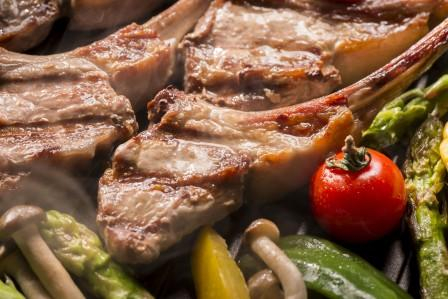
Meat is big business in the UAE, and Australia is cashing in. The country’s meat exports to the UAE are growing steadily, representing 27 per cent of Australia-Middle East and North Africa (Mena) exports, says Jamie Ferguson, Regional Manager, Mena, Meat and Livestock Australia (MLA).
The UAE also accounts for 24 per cent of mutton and 13 per cent of beef exported to the region. To make things easier, MLA provides marketing, research and development services for Australia’s cattle industries.
In the UAE, MLA has brought chef and butcher training workshops, cooking demonstrations and consumer samplings in a continued effort to maintain and encourage more demand for Australian halal red meat and livestock among retailers, food service operators, importers, manufacturers and Australian exporters.
So far, this year’s imports into the UAE of lamb reached 11,203 metric tonnes (up 9 per cent on last year), while mutton hit 8,288 metric tonnes (up 5 per cent) and beef, 5,643 metric tonnes (up 9 per cent). “The total imports of red meat into the UAE as of end August was 25,134 metric tonnes,” says Ferguson. Regional red meat imports during the same period totalled 117,758 metric tonnes. The market value in 2013-14 of mutton was A$151.7 million (about Dh500 million) excluding live sheep, while beef was valued at A$69.1 million.
This year has seen many companies in the UAE’s retail and food service sectors expanding their red meat range with new innovative cuts, says Ferguson.
“There is a definite shift in focus from the traditional loin cuts to the more affordable, but just as delicious — think forequarter and hindquarter cuts, oyster blade, beef flank steak, short ribs, rump, beef cheek, lamb forequarter rack, lamb neck fillet and lamb shanks.”
A cut above
However, Australian Wagyu continues be the most popular beef item on five-star hotel menus and steakhouses, says Ferguson. As for organic, grass-fed or grain-fed meat, he says, “They are growing in line with global organic growth patterns, sitting at approximately 10-12 per cent growth in the UAE.”
Another development within the meat supply system is that most importers are investing in infrastructure, transport and technical infrastructure. “Constant improvement is taking place,” says Ferguson.
In fact, last September, the Australian Meat Industry Council (AMIC), an organisation representing all livestock processors and independent retailers, introduced the the Australian Livestock Processing Industry Animal Welfare Certification System.
Animal welfare
“Australia is a world leader in animal welfare and works closely with all importing countries for the greater good of Australian animals on the market. Animal welfare has a direct correlation with meat quality and consistency,” says Ferguson.
For the live animal export trade, the Australian Department of Agriculture has signed agreements with ten Mena countries. A key element is that animals are to be unloaded upon arrival regardless of their health status. Its website states, “The agreements allow us to help our trading partners improve post-arrival handling and slaughter through activities based around improving animal welfare.”
Dubai’s forecasted economic growth and rising population means food imports will become increasingly important, according to a report by the Dubai Chamber of Commerce and Industry based on a recent study by Thomson Reuters and DinarStandard, an advisory firm.
Dubai imports meat from a number of markets and Australia’s 27,000 metric tonnes represents a 9 per cent market share. Brazil supplied more than half of Dubai’s meat imports last year — 166,000 metric tonnes, or 53 per cent of market share. The US exported 43,000 metric tonnes, while Pakistan and India supplied 5 per cent each. Ethiopia cornered 3 per cent, states the report.








